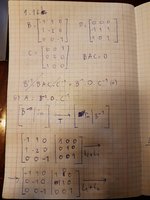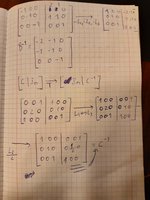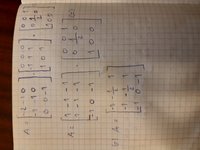Find the only matrix \(\displaystyle A\) that fits the criteria:

So I decomposed the side to the product of elementary matrices. The result was:

If \(\displaystyle \begin{bmatrix} a_{11} & a_{12} & a_{13}\\ a_{21} & a_{22} & a_{23}\\ a_{31} & a_{32} & a_{33}\end{bmatrix} \) then the left side after all the transformations is equal to:
 , wich in the end, after solving all the system of equations leaves me with:
, wich in the end, after solving all the system of equations leaves me with:

The book says the solution is different, what am I doing wrong?
So I decomposed the side to the product of elementary matrices. The result was:
If \(\displaystyle \begin{bmatrix} a_{11} & a_{12} & a_{13}\\ a_{21} & a_{22} & a_{23}\\ a_{31} & a_{32} & a_{33}\end{bmatrix} \) then the left side after all the transformations is equal to:

The book says the solution is different, what am I doing wrong?



